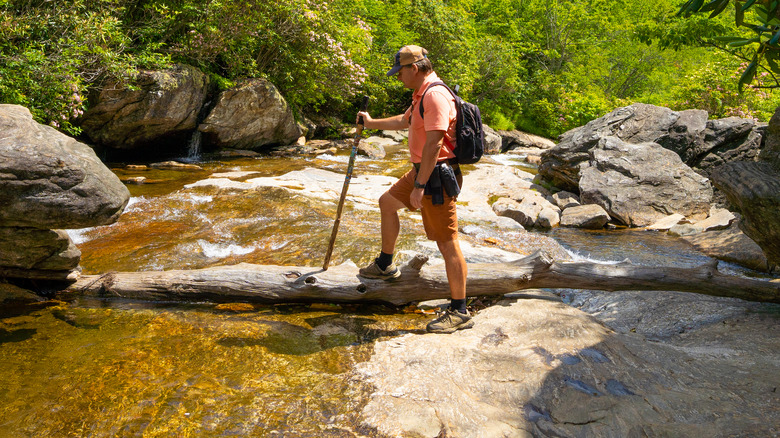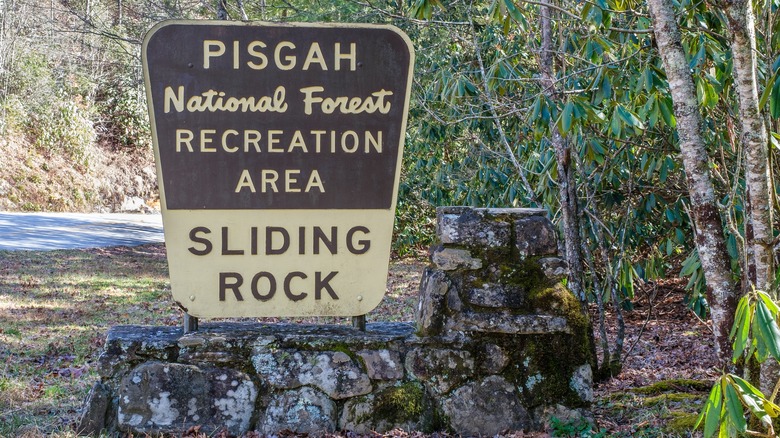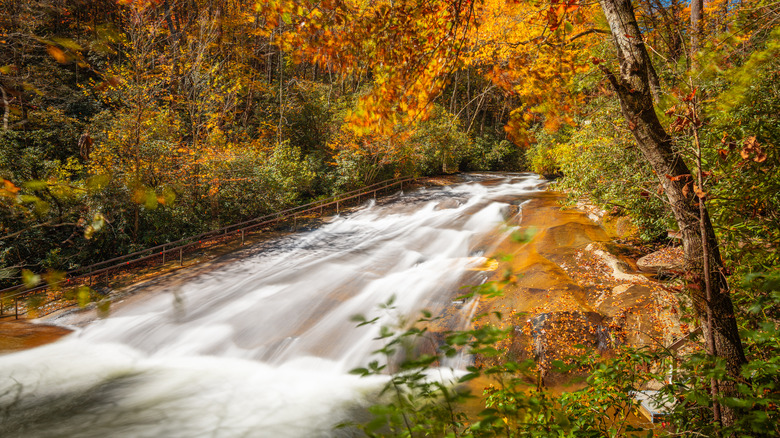Travel Guides Outdoor Adventures Water Adventures
Amanda Morgan
Suppose you’re hunting for the perfect way to spend a balmy summer weekend. In that case, it’s time to plan a trip to Pisgah National Forest in North Carolina, where you can experience one of the coolest natural water slides in the United States. The destination is a massive 500,000-acre preserve in the Blue Ridge Mountains. Located about 30 minutes from the vibrant city of Asheville, North Carolina, Pisgah attracts millions of travelers each year and was recently named the most popular national forest in the country in a study conducted by Musement.
On a visit to Pisgah, you can explore miles of hiking trails, wild rivers, thick deciduous forests, beautiful waterfalls, and one of the most iconic swimming holes ever — complete with nature’s perfect water slide. Sliding Rock is a favorite summer spot for locals and tourists alike, and for good reason. It’s a thrilling way to cool off and make memories with friends and family.
Experience nature’s waterpark

Margaret.Wiktor/Shutterstock
Who needs to visit a pricey amusement park to splash on a thrill ride when such exciting options exist in the great outdoors? Sliding Rock has been a famous summer swimming hole for generations, and it’s easy to see why. The natural waterslide of smooth rock plummets 60 feet into an 8-foot-deep pool.
Water temperatures remain chilly all year round, ranging from 50 – 60 degrees Fahrenheit. The cool water temps can come as quite a shock if you’re sensitive to cold temperatures, so consider visiting after a long, sweaty hike when it’s sure to feel the most refreshing. If you aren’t up for the plunge, there are observation points where you can relax and watch as others go down the slide.
On warm summer days, you’ll find the area packed with people, so be prepared to wait in line for your chance to go down the slide. Weekends tend to be the busiest times, so consider visiting on a weekday if possible. If you do visit on Saturday or Sunday, try to arrive early in the morning to avoid the crowds.
Visiting Sliding Rock

Carrie A Hanrahan/Shutterstock
Admission to Sliding Rock costs $5, and you can pay with cash or credit card when you enter the gate. Lifeguards are on duty during the day between early May and mid-September, seven days a week. You can still visit year-round, but it won’t be staffed, so explore with caution. Swimming and sliding should always be avoided after heavy rain due to flooding.
When lifeguards are on duty, restrooms are available on-site, but they are closed once the area is no longer staffed for the season. Picnicking is not permitted at Sliding Rock because of the crowds. But there are plenty of picnic tables along the roadside nearby where you can stop for lunch before or after your swim.
Cell phone reception can be very sparse in this area, so GPS won’t always work. Ensure you have a general idea of where you’re headed before you set off on your adventure. You’ll see signage for Sliding Rock National Forest Recreation Area when you arrive. There is a parking lot on site, but it tends to fill up quickly during peak hours, and there will be limited spots to accommodate buses and RVs. Be prepared for staff to ask you to check out other sites and return once parking becomes available.

